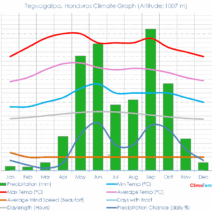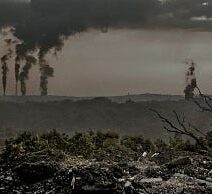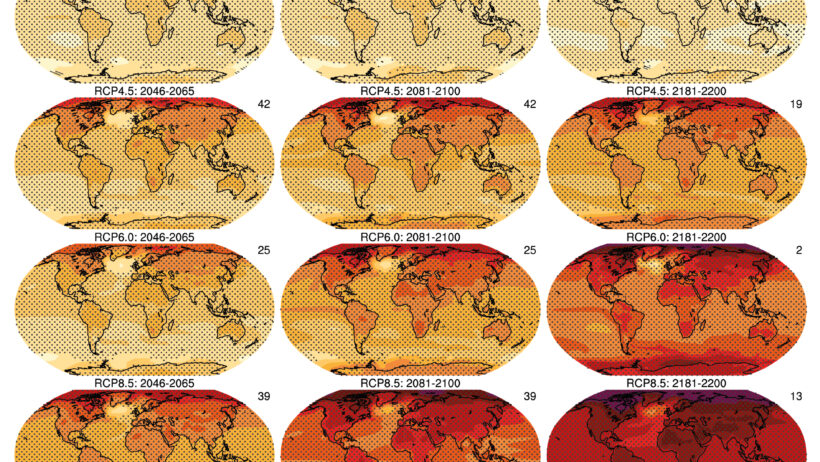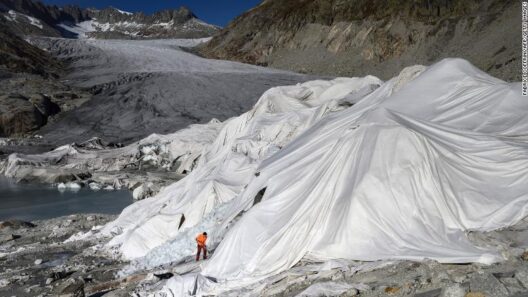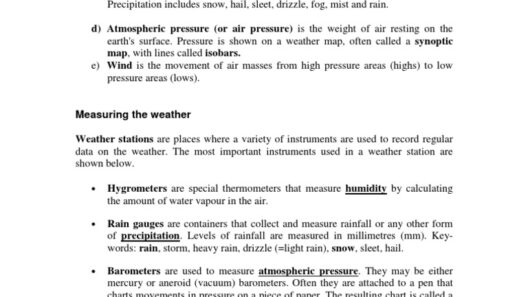The terms “global warming” and “climate change” are often used interchangeably, yet they embody distinct concepts that resonate differently within the broader environmental discourse. Just as a painter might choose subtle hues to convey varying emotions, the choice of terminology reflects nuanced perspectives on the planet’s ecological trajectory. By exploring the intricacies of these terms, we can gain a clearer understanding of their implications, facilitating informed discussions about our collective environmental responsibility.
To begin with, global warming refers specifically to the long-term increase in Earth’s average surface temperature due to human activities, predominantly the burning of fossil fuels. This phenomenon is akin to a pot of water slowly heating on a stove; the temperature increases gradually but steadily. In contrast, climate change encompasses a broader spectrum of alterations to the Earth’s climate system, including not only warming but also shifts in weather patterns, rising sea levels, and increased frequency of extreme weather events. Think of climate change as the entire atmospheric symphony, where global warming is but one prominent crescendo, accompanied by other changes that evoke different movements in the score of planetary health.
The significance of distinguishing between global warming and climate change extends beyond semantics. The societal and political ramifications of these terms can shape policy decisions, influence public perception, and ultimately steer the trajectory of environmental conservation efforts. A clear comprehension of the terms can empower individuals and communities to engage meaningfully in climate action, ensuring that dialogues about the environment are well-informed and targeted.
Using “global warming” can evoke a sense of urgency. It implies a direct and observable effect of human activity, urging individuals to confront the rising temperatures that threaten biodiversity, crop yields, and human health. This perspective often catalyzes immediate action, galvanizing grassroots movements and governmental initiatives aimed at reducing greenhouse gas emissions. Disparate stakeholders, from local activists to global leaders, can unite under the banner of global warming, fostering collective action that reverberates across communities.
On the other hand, “climate change” invites a broader contemplation of the planet’s ever-evolving environmental tapestry. It encourages us to acknowledge the intricacies of the interconnected systems that sustain life on Earth. Climate change dares us to examine the melting polar ice caps, the increased acidity of ocean waters, and the biodiversity loss unfolding at alarming rates. While global warming may manifest as a linear increase in temperature, climate change serves as a multidimensional map illustrating the complex variables that interplay within our ecosystem.
The distinction between the two terms also underscores the urgency of combating misinformation. In a world saturated with instant information, clarity is crucial. The term “global warming” may sometimes be weaponized by detractors who downplay the severity of human-induced climate issues by framing the narrative solely around temperature increases—an argument that can seem more commonplace. Conversely, climate change encompasses a wide array of phenomena that defy simplistic analysis. This complexity discloses a more compelling narrative about the myriad ways in which the planet is endangered, underlining the necessity for comprehensive, proactive measures to safeguard our future.
In the realm of advocacy, how these concepts are employed can affect fundraising, public engagement, and legislative support. An environmental NGO that articulates its mission in terms of “climate change” may attract a broader audience, including those concerned with social justice, economic equity, and public health. By emphasizing the interconnectedness of these issues, the organization can position climate change as a social imperative—an urgent call to action that cannot be ignored.
Moreover, the cognitive framing of concepts plays a pivotal role in swaying public opinion. “Global warming,” with its immediate and tangible implications, may resonate instinctively with individuals through fear or urgency, motivating them to act. Conversely, addressing “climate change” might gently beckon deeper reflection and a long-term vision, urging individuals to consider sustainable living practices that promote harmony with the environment. The emotional charge attached to each term—a more visceral reaction to warming and a meditative contemplation of change—dictates how people may rally around solutions.
As the scientific community continues to underline the urgency surrounding both global warming and climate change, the importance of terminology remains paramount. The lexicon of climate advocacy affects everything from policy initiatives to climate literacy in education systems. Schools that incorporate discussions surrounding climate change will educate a generation capable of comprehending the nuances of atmospheric shifts. Informing students about not only the facts but also the semantics encourages them to navigate discourse with precision and awareness when they become stewards of their environment.
Through effective communication of the differences between global warming and climate change, society can cultivate a greater awareness that transcends mere terminology. One such avenue is through metaphorical storytelling, which can distill complex scientific information into relatable narratives. Consider the Earth as a finely woven tapestry, with each thread representing various ecosystems, human lives, and economic systems. Global warming pulls at the threads by altering the temperature balance, leading to unraveling patches—such as biodiversity loss and extreme weather events—while climate change reflects the wear and tear of time, illustrating how the tapestry must be tended in order to preserve its beautiful complexity.
In conclusion, while both “global warming” and “climate change” convey urgent warnings about the state of our planet, understanding their distinctions is vital for effective advocacy and policy-making. Each term represents different facets of a multifaceted issue, and the choice of terminology can influence public discourse and action. Recognizing the significance of these distinctions equips us with a deeper understanding of the challenges we face, allowing us to navigate the path to a sustainable future with clarity and purpose.
